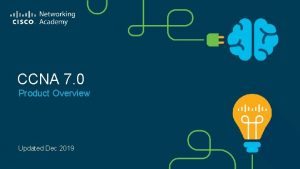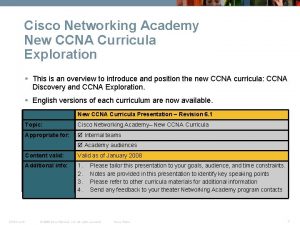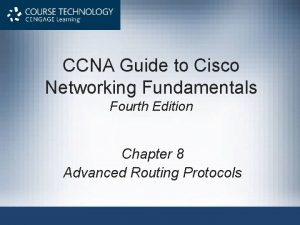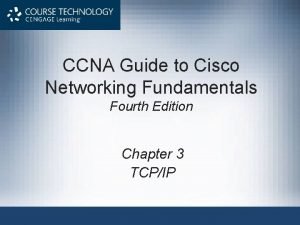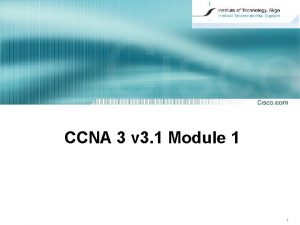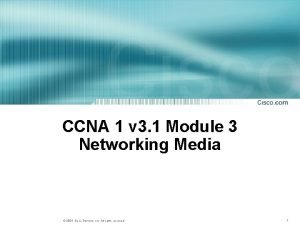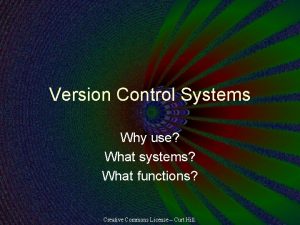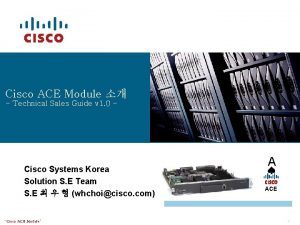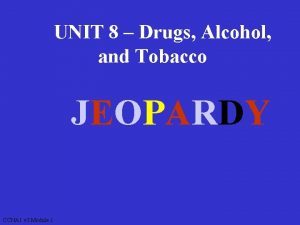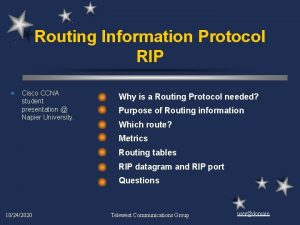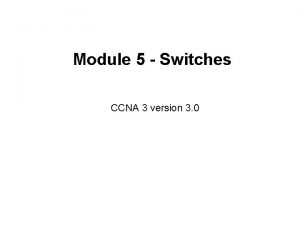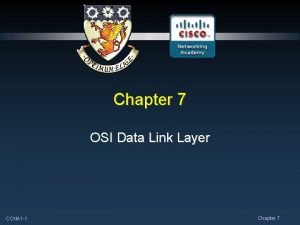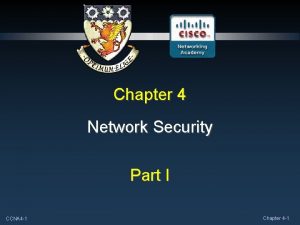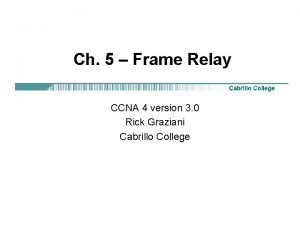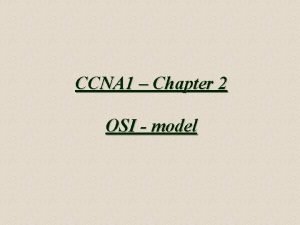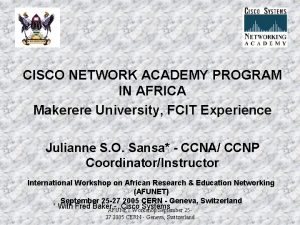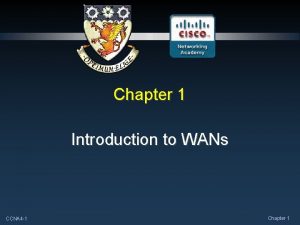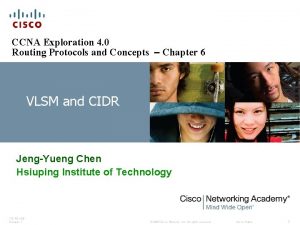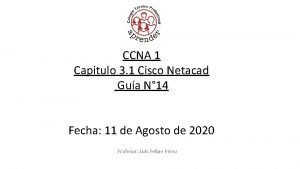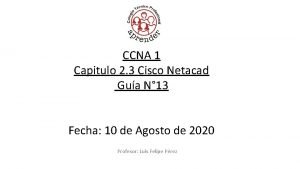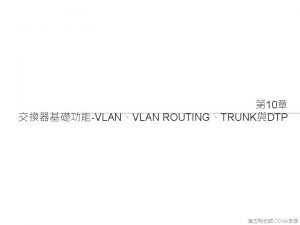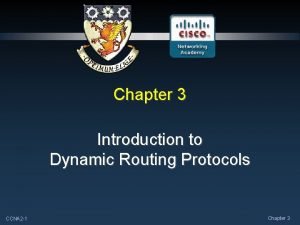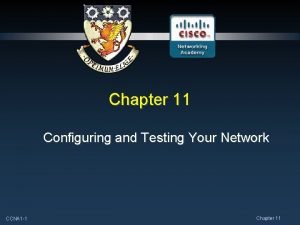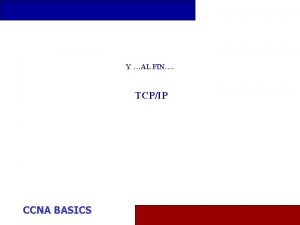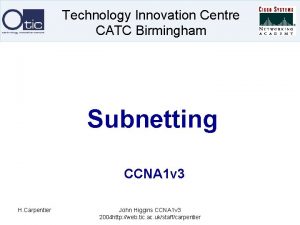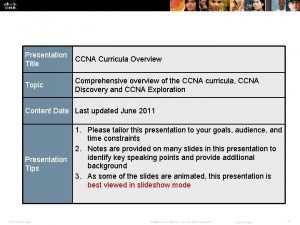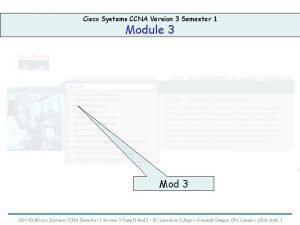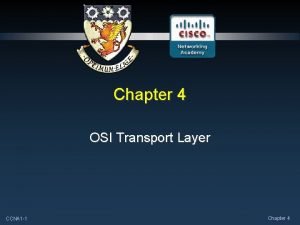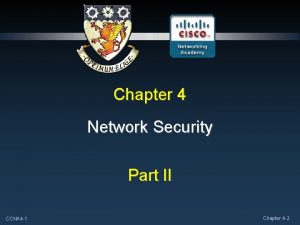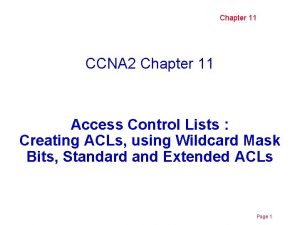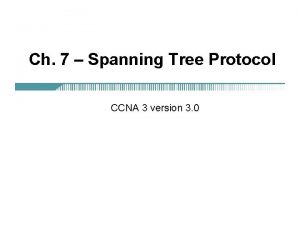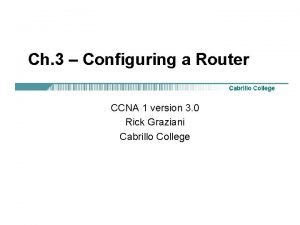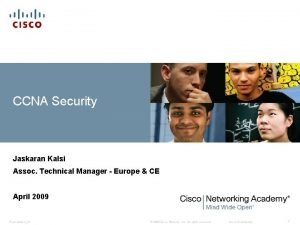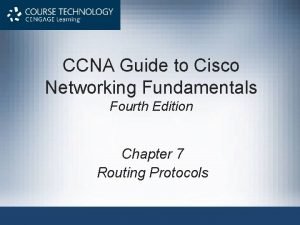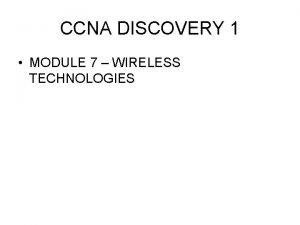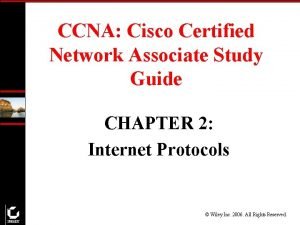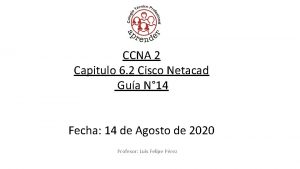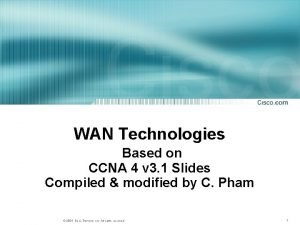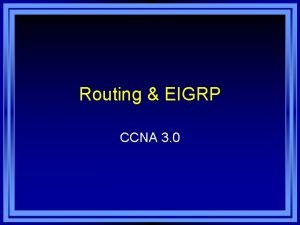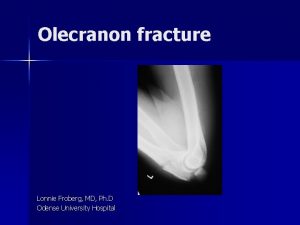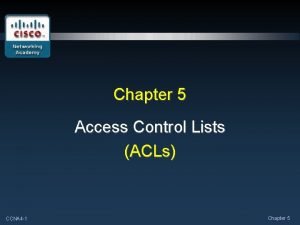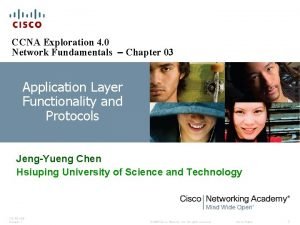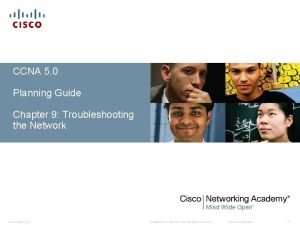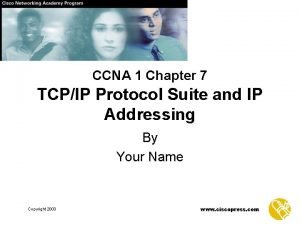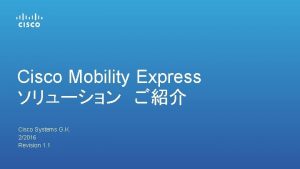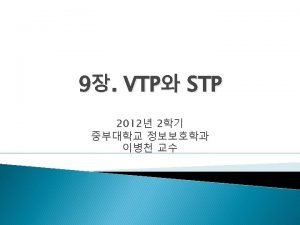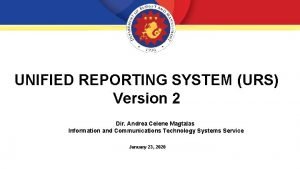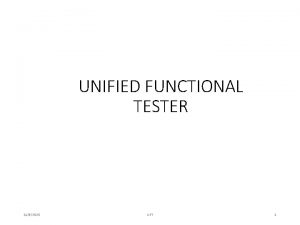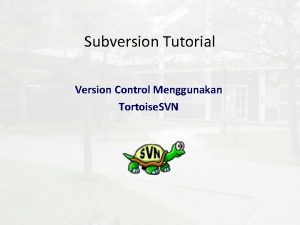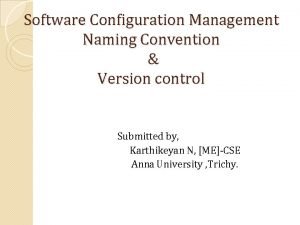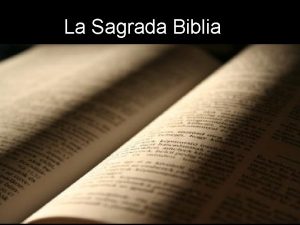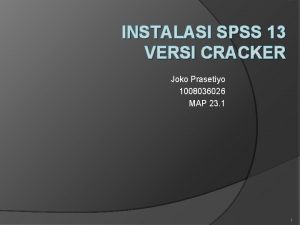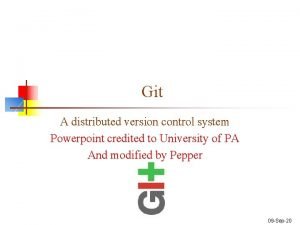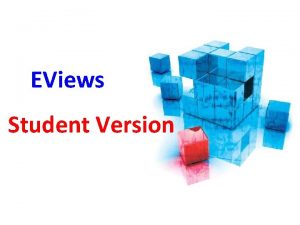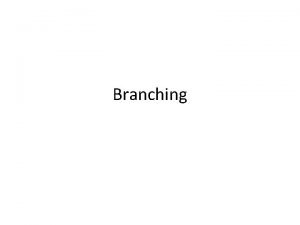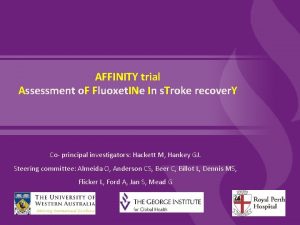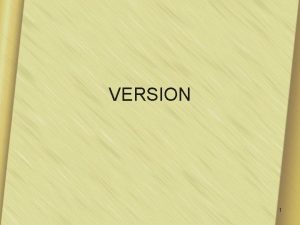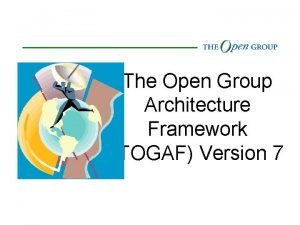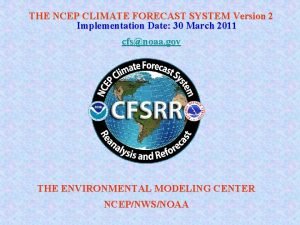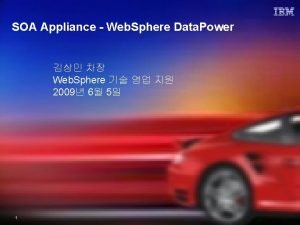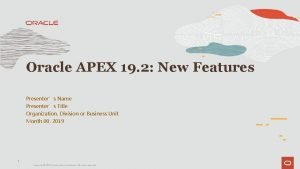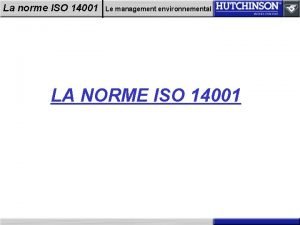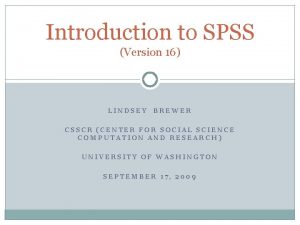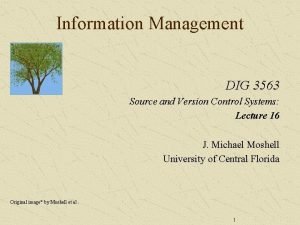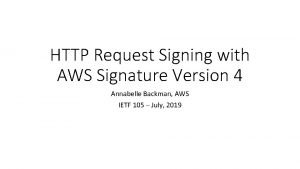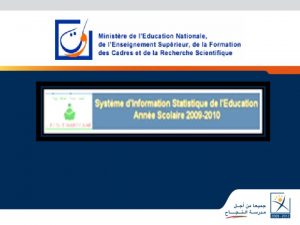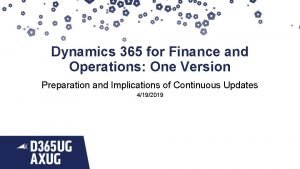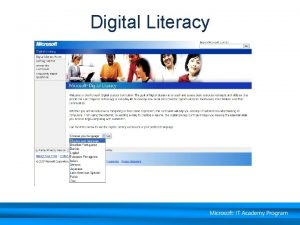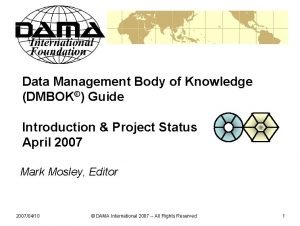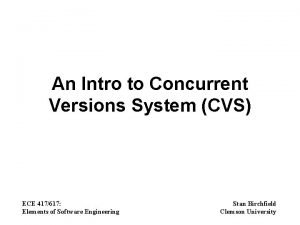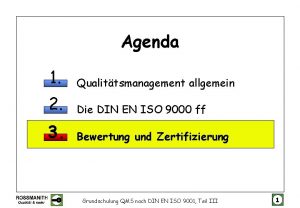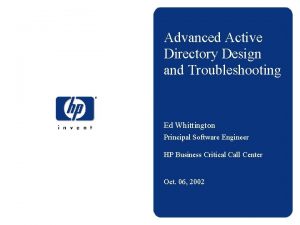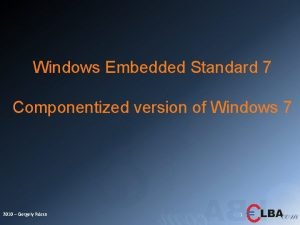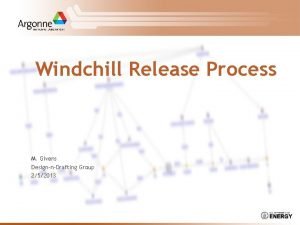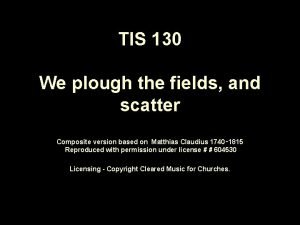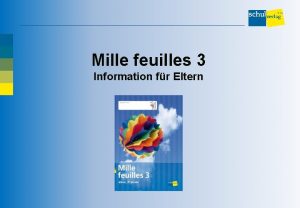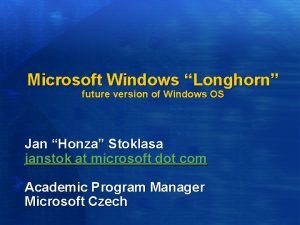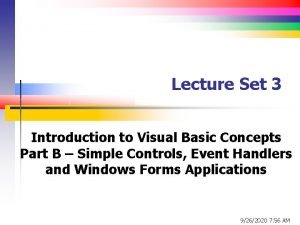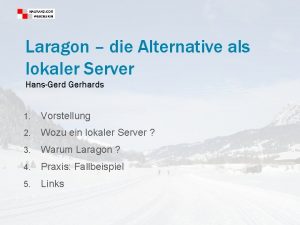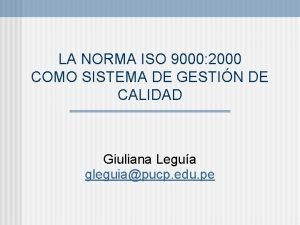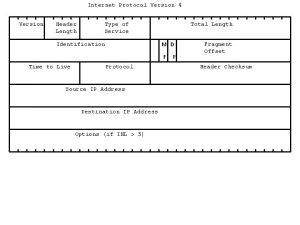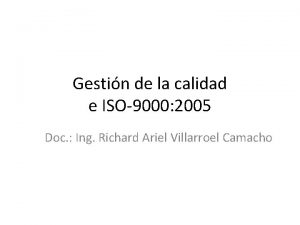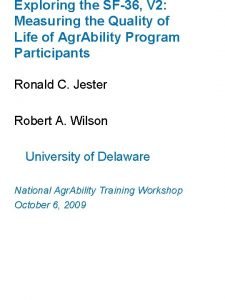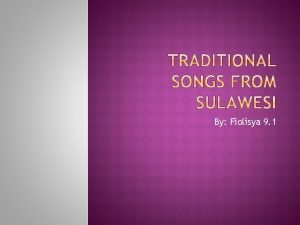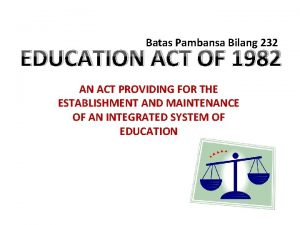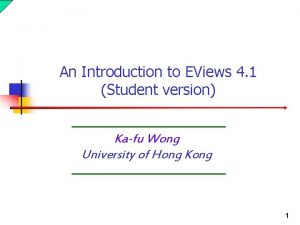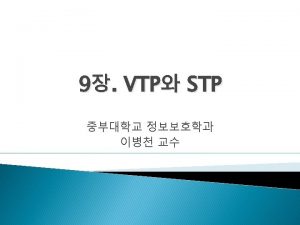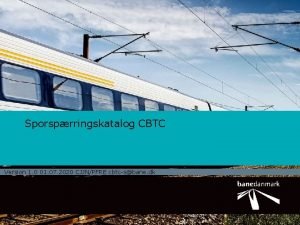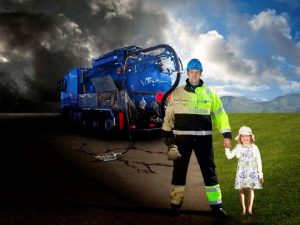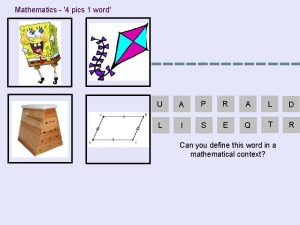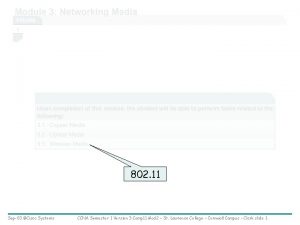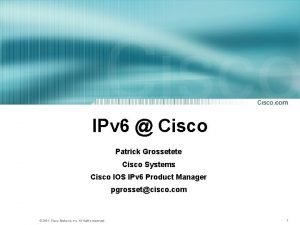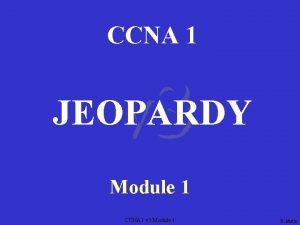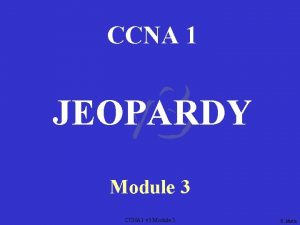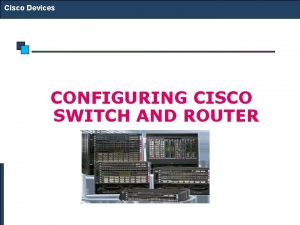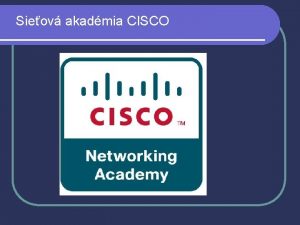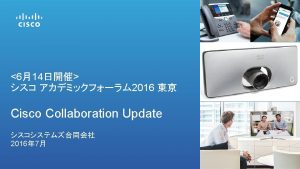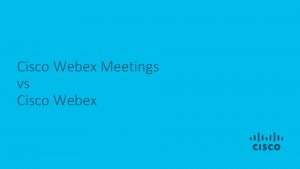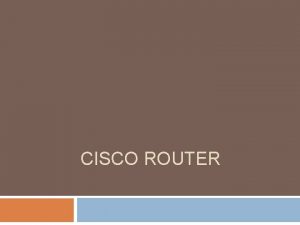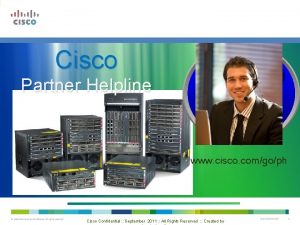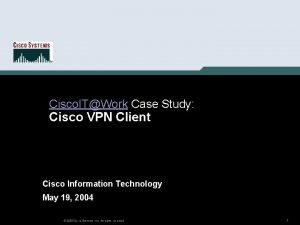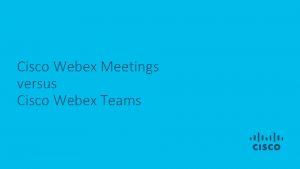Cisco Systems CCNA Version 3 Semester 1 Module





































































































































- Slides: 133

Cisco Systems CCNA Version 3 Semester 1 Module 3 Mod 3 Oct-03 ©Cisco Systems CCNA Semester 1 Version 3 Comp 11 Mod 3 – St. Lawrence College – Cornwall Campus, ON, Canada – Clark slide 1

Copper Media Oct-03 ©Cisco Systems CCNA Semester 1 Version 3 Comp 11 Mod 3 – St. Lawrence College – Cornwall Campus, ON, Canada – Clark slide 2

Oct-03 ©Cisco Systems CCNA Semester 1 Version 3 Comp 11 Mod 3 – St. Lawrence College – Cornwall Campus, ON, Canada – Clark slide 3

Oct-03 ©Cisco Systems CCNA Semester 1 Version 3 Comp 11 Mod 3 – St. Lawrence College – Cornwall Campus, ON, Canada – Clark slide 4

Oct-03 ©Cisco Systems CCNA Semester 1 Version 3 Comp 11 Mod 3 – St. Lawrence College – Cornwall Campus, ON, Canada – Clark slide 5

Oct-03 ©Cisco Systems CCNA Semester 1 Version 3 Comp 11 Mod 3 – St. Lawrence College – Cornwall Campus, ON, Canada – Clark slide 6

Oct-03 ©Cisco Systems CCNA Semester 1 Version 3 Comp 11 Mod 3 – St. Lawrence College – Cornwall Campus, ON, Canada – Clark slide 7

Oct-03 ©Cisco Systems CCNA Semester 1 Version 3 Comp 11 Mod 3 – St. Lawrence College – Cornwall Campus, ON, Canada – Clark slide 8

Oct-03 ©Cisco Systems CCNA Semester 1 Version 3 Comp 11 Mod 3 – St. Lawrence College – Cornwall Campus, ON, Canada – Clark slide 9

Oct-03 ©Cisco Systems CCNA Semester 1 Version 3 Comp 11 Mod 3 – St. Lawrence College – Cornwall Campus, ON, Canada – Clark slide 10

Oct-03 ©Cisco Systems CCNA Semester 1 Version 3 Comp 11 Mod 3 – St. Lawrence College – Cornwall Campus, ON, Canada – Clark slide 11

Oct-03 ©Cisco Systems CCNA Semester 1 Version 3 Comp 11 Mod 3 – St. Lawrence College – Cornwall Campus, ON, Canada – Clark slide 12

Oct-03 ©Cisco Systems CCNA Semester 1 Version 3 Comp 11 Mod 3 – St. Lawrence College – Cornwall Campus, ON, Canada – Clark slide 13

Oct-03 ©Cisco Systems CCNA Semester 1 Version 3 Comp 11 Mod 3 – St. Lawrence College – Cornwall Campus, ON, Canada – Clark slide 14

Oct-03 ©Cisco Systems CCNA Semester 1 Version 3 Comp 11 Mod 3 – St. Lawrence College – Cornwall Campus, ON, Canada – Clark slide 15

Oct-03 ©Cisco Systems CCNA Semester 1 Version 3 Comp 11 Mod 3 – St. Lawrence College – Cornwall Campus, ON, Canada – Clark slide 16

Oct-03 ©Cisco Systems CCNA Semester 1 Version 3 Comp 11 Mod 3 – St. Lawrence College – Cornwall Campus, ON, Canada – Clark slide 17

Oct-03 ©Cisco Systems CCNA Semester 1 Version 3 Comp 11 Mod 3 – St. Lawrence College – Cornwall Campus, ON, Canada – Clark slide 18

Oct-03 ©Cisco Systems CCNA Semester 1 Version 3 Comp 11 Mod 3 – St. Lawrence College – Cornwall Campus, ON, Canada – Clark slide 19

Oct-03 ©Cisco Systems CCNA Semester 1 Version 3 Comp 11 Mod 3 – St. Lawrence College – Cornwall Campus, ON, Canada – Clark slide 20

Oct-03 ©Cisco Systems CCNA Semester 1 Version 3 Comp 11 Mod 3 – St. Lawrence College – Cornwall Campus, ON, Canada – Clark slide 21

Oct-03 ©Cisco Systems CCNA Semester 1 Version 3 Comp 11 Mod 3 – St. Lawrence College – Cornwall Campus, ON, Canada – Clark slide 22

Oct-03 ©Cisco Systems CCNA Semester 1 Version 3 Comp 11 Mod 3 – St. Lawrence College – Cornwall Campus, ON, Canada – Clark slide 23

Oct-03 ©Cisco Systems CCNA Semester 1 Version 3 Comp 11 Mod 3 – St. Lawrence College – Cornwall Campus, ON, Canada – Clark slide 24

Oct-03 ©Cisco Systems CCNA Semester 1 Version 3 Comp 11 Mod 3 – St. Lawrence College – Cornwall Campus, ON, Canada – Clark slide 25

Oct-03 ©Cisco Systems CCNA Semester 1 Version 3 Comp 11 Mod 3 – St. Lawrence College – Cornwall Campus, ON, Canada – Clark slide 26

Oct-03 ©Cisco Systems CCNA Semester 1 Version 3 Comp 11 Mod 3 – St. Lawrence College – Cornwall Campus, ON, Canada – Clark slide 27

Oct-03 ©Cisco Systems CCNA Semester 1 Version 3 Comp 11 Mod 3 – St. Lawrence College – Cornwall Campus, ON, Canada – Clark slide 28

Oct-03 ©Cisco Systems CCNA Semester 1 Version 3 Comp 11 Mod 3 – St. Lawrence College – Cornwall Campus, ON, Canada – Clark slide 29

Test the Cable Oct-03 ©Cisco Systems CCNA Semester 1 Version 3 Comp 11 Mod 3 – St. Lawrence College – Cornwall Campus, ON, Canada – Clark slide 30

Ethernet Family Tree Oct-03 ©Cisco Systems CCNA Semester 1 Version 3 Comp 11 Mod 3 – St. Lawrence College – Cornwall Campus, ON, Canada – Clark slide 31

Wall Jacks and Patch Panels Oct-03 ©Cisco Systems CCNA Semester 1 Version 3 Comp 11 Mod 3 – St. Lawrence College – Cornwall Campus, ON, Canada – Clark slide 32

Transceivers Oct-03 ©Cisco Systems CCNA Semester 1 Version 3 Comp 11 Mod 3 – St. Lawrence College – Cornwall Campus, ON, Canada – Clark slide 33

Repeaters / Hubs Oct-03 ©Cisco Systems CCNA Semester 1 Version 3 Comp 11 Mod 3 – St. Lawrence College – Cornwall Campus, ON, Canada – Clark slide 34

Oct-03 ©Cisco Systems CCNA Semester 1 Version 3 Comp 11 Mod 3 – St. Lawrence College – Cornwall Campus, ON, Canada – Clark slide 35

Oct-03 ©Cisco Systems CCNA Semester 1 Version 3 Comp 11 Mod 3 – St. Lawrence College – Cornwall Campus, ON, Canada – Clark slide 36

Optical Media Oct-03 ©Cisco Systems CCNA Semester 1 Version 3 Comp 11 Mod 3 – St. Lawrence College – Cornwall Campus, ON, Canada – Clark slide 37

Oct-03 ©Cisco Systems CCNA Semester 1 Version 3 Comp 11 Mod 3 – St. Lawrence College – Cornwall Campus, ON, Canada – Clark slide 38

Oct-03 ©Cisco Systems CCNA Semester 1 Version 3 Comp 11 Mod 3 – St. Lawrence College – Cornwall Campus, ON, Canada – Clark slide 39

Oct-03 ©Cisco Systems CCNA Semester 1 Version 3 Comp 11 Mod 3 – St. Lawrence College – Cornwall Campus, ON, Canada – Clark slide 40

700 nanometers 400 nanometers The wavelength of the light in optical fiber is either 1550 nm, 1310 nm, or 850 nm. Oct-03 ©Cisco Systems CCNA Semester 1 Version 3 Comp 11 Mod 3 – St. Lawrence College – Cornwall Campus, ON, Canada – Clark slide 41

300, 000 kilometers per second. Oct-03 ©Cisco Systems CCNA Semester 1 Version 3 Comp 11 Mod 3 – St. Lawrence College – Cornwall Campus, ON, Canada – Clark slide 42

Oct-03 ©Cisco Systems CCNA Semester 1 Version 3 Comp 11 Mod 3 – St. Lawrence College – Cornwall Campus, ON, Canada – Clark slide 43

Oct-03 ©Cisco Systems CCNA Semester 1 Version 3 Comp 11 Mod 3 – St. Lawrence College – Cornwall Campus, ON, Canada – Clark slide 44

Oct-03 ©Cisco Systems CCNA Semester 1 Version 3 Comp 11 Mod 3 – St. Lawrence College – Cornwall Campus, ON, Canada – Clark slide 45

Oct-03 ©Cisco Systems CCNA Semester 1 Version 3 Comp 11 Mod 3 – St. Lawrence College – Cornwall Campus, ON, Canada – Clark slide 46

Oct-03 ©Cisco Systems CCNA Semester 1 Version 3 Comp 11 Mod 3 – St. Lawrence College – Cornwall Campus, ON, Canada – Clark slide 47

Oct-03 ©Cisco Systems CCNA Semester 1 Version 3 Comp 11 Mod 3 – St. Lawrence College – Cornwall Campus, ON, Canada – Clark slide 48

Infrared Light Emitting Diodes (LEDs) Vertical Cavity Surface Emitting Lasers (VCSELs) Oct-03 ©Cisco Systems CCNA Semester 1 Version 3 Comp 11 Mod 3 – St. Lawrence College – Cornwall Campus, ON, Canada – Clark slide 49

Oct-03 ©Cisco Systems CCNA Semester 1 Version 3 Comp 11 Mod 3 – St. Lawrence College – Cornwall Campus, ON, Canada – Clark slide 50

Oct-03 ©Cisco Systems CCNA Semester 1 Version 3 Comp 11 Mod 3 – St. Lawrence College – Cornwall Campus, ON, Canada – Clark slide 51

Oct-03 ©Cisco Systems CCNA Semester 1 Version 3 Comp 11 Mod 3 – St. Lawrence College – Cornwall Campus, ON, Canada – Clark slide 52

Oct-03 ©Cisco Systems CCNA Semester 1 Version 3 Comp 11 Mod 3 – St. Lawrence College – Cornwall Campus, ON, Canada – Clark slide 53

Oct-03 ©Cisco Systems CCNA Semester 1 Version 3 Comp 11 Mod 3 – St. Lawrence College – Cornwall Campus, ON, Canada – Clark slide 54

Oct-03 ©Cisco Systems CCNA Semester 1 Version 3 Comp 11 Mod 3 – St. Lawrence College – Cornwall Campus, ON, Canada – Clark slide 55

On single-mode fiber - Straight Tip (ST) Oct-03 ©Cisco Systems CCNA Semester 1 Version 3 Comp 11 Mod 3 – St. Lawrence College – Cornwall Campus, ON, Canada – Clark slide 56

Oct-03 ©Cisco Systems CCNA Semester 1 Version 3 Comp 11 Mod 3 – St. Lawrence College – Cornwall Campus, ON, Canada – Clark slide 57

Oct-03 ©Cisco Systems CCNA Semester 1 Version 3 Comp 11 Mod 3 – St. Lawrence College – Cornwall Campus, ON, Canada – Clark slide 58

Outdoor Indoor Oct-03 ©Cisco Systems CCNA Semester 1 Version 3 Comp 11 Mod 3 – St. Lawrence College – Cornwall Campus, ON, Canada – Clark slide 59

Oct-03 ©Cisco Systems CCNA Semester 1 Version 3 Comp 11 Mod 3 – St. Lawrence College – Cornwall Campus, ON, Canada – Clark slide 60

Single-mode fiber can carry LAN data up to 3000 meters. Multimode is only capable of carrying up to 2000 meters. Lasers and single-mode fibers are more expensive than LEDs and multimode fiber. Because of these characteristics, single-mode fiber is often used for inter-building connectivity. A 9/125 marking on the jacket of the single-mode fiber indicates that the core fiber has a diameter of 9 microns and the surrounding cladding is 125 microns in diameter. Oct-03 ©Cisco Systems CCNA Semester 1 Version 3 Comp 11 Mod 3 – St. Lawrence College – Cornwall Campus, ON, Canada – Clark slide 61

Light amplification by stimulated emission radiation (LASER) producing a thin beam of intense infrared light usually with wavelengths of 1310 nm or 1550 nm. Used with single-mode fiber over the longer distances involved in WANs or campus backbones. p-intrinsic-n diodes (PIN photodiodes). A light emitting diode (LED) producing infrared light with wavelengths of either 850 nm or 1310 nm. These are used with multimode fiber in LANs. Lenses are used to focus the infrared light on the end of the fiber Oct-03 ©Cisco Systems CCNA Semester 1 Version 3 Comp 11 Mod 3 – St. Lawrence College – Cornwall Campus, ON, Canada – Clark slide 62

The type of connector most commonly used with multimode fiber is the Subscriber Connector (SC connector). On single-mode fiber, the Straight Tip (ST) connector is frequently used. Oct-03 ©Cisco Systems CCNA Semester 1 Version 3 Comp 11 Mod 3 – St. Lawrence College – Cornwall Campus, ON, Canada – Clark slide 63

Oct-03 ©Cisco Systems CCNA Semester 1 Version 3 Comp 11 Mod 3 – St. Lawrence College – Cornwall Campus, ON, Canada – Clark slide 64

Oct-03 ©Cisco Systems CCNA Semester 1 Version 3 Comp 11 Mod 3 – St. Lawrence College – Cornwall Campus, ON, Canada – Clark slide 65

Oct-03 ©Cisco Systems CCNA Semester 1 Version 3 Comp 11 Mod 3 – St. Lawrence College – Cornwall Campus, ON, Canada – Clark slide 66

Oct-03 ©Cisco Systems CCNA Semester 1 Version 3 Comp 11 Mod 3 – St. Lawrence College – Cornwall Campus, ON, Canada – Clark slide 67

Oct-03 ©Cisco Systems CCNA Semester 1 Version 3 Comp 11 Mod 3 – St. Lawrence College – Cornwall Campus, ON, Canada – Clark slide 68

Oct-03 ©Cisco Systems CCNA Semester 1 Version 3 Comp 11 Mod 3 – St. Lawrence College – Cornwall Campus, ON, Canada – Clark slide 69

Oct-03 ©Cisco Systems CCNA Semester 1 Version 3 Comp 11 Mod 3 – St. Lawrence College – Cornwall Campus, ON, Canada – Clark slide 70

Oct-03 ©Cisco Systems CCNA Semester 1 Version 3 Comp 11 Mod 3 – St. Lawrence College – Cornwall Campus, ON, Canada – Clark slide 71

Oct-03 ©Cisco Systems CCNA Semester 1 Version 3 Comp 11 Mod 3 – St. Lawrence College – Cornwall Campus, ON, Canada – Clark slide 72

Oct-03 ©Cisco Systems CCNA Semester 1 Version 3 Comp 11 Mod 3 – St. Lawrence College – Cornwall Campus, ON, Canada – Clark slide 73

Oct-03 ©Cisco Systems CCNA Semester 1 Version 3 Comp 11 Mod 3 – St. Lawrence College – Cornwall Campus, ON, Canada – Clark slide 74

Wireless Media 802. 11 Oct-03 ©Cisco Systems CCNA Semester 1 Version 3 Comp 11 Mod 3 – St. Lawrence College – Cornwall Campus, ON, Canada – Clark slide 75

Oct-03 ©Cisco Systems CCNA Semester 1 Version 3 Comp 11 Mod 3 – St. Lawrence College – Cornwall Campus, ON, Canada – Clark slide 76

IEEE 802 Committees 802. 0 SEC 802. 1 High Level Interface (HILI) 802. 2 Logical Link Control (LLC) 802. 3 CSMA/CD Working Group 802. 4 Token Bus 802. 5 Token Ring 802. 6 Metropolitan Area Network (MAN) 802. 7 Broad. Band Technical Adv. Group (BBTAG) 802. 8 Fiber Optics Technical Adv. Group (FOTAG) 802. 9 Integrated Services LAN (ISLAN) 802. 10 Standard for Interoperable LAN Security (SILS) 801. 11 Wireless LAN (WLAN) IEEE 802. 11 a IEEE 802. 11 b Wi. Fi IEEE 802. 11 g IEEE 802. 15. 1 Bluetooth IEEE 802. 11 e IEEE 802. 11 f IEEE 802. 11 h IEEE 802. 11 i Security 2004 802. 12 Demand Priority IEEE 802. 15 TG 2 802. 14 Cable-TV Based Broadband Communication Network IEEE 802. 15 TG 4 IEEE 802. 15 TG 3 802. 15 Wireless Personal Area Network (WPAN) 802. 16 Broadband Wireless Access (BBWA) RPRSG Resilient Packet Ring Study Group (RPRSG) Oct-03 ©Cisco Systems CCNA Semester 1 Version 3 Comp 11 Mod 3 – St. Lawrence College – Cornwall Campus, ON, Canada – Clark slide 77

2. 4 GHz Radio Licenses NOT required in these bands 5 GHz Direct Sequence Spread Spectrum IEEE 802. 11 Standard for WLAN operations at data rates up to 2 Mbps in the 2. 4 GHz ISM band. DSSS modulation. IEEE 802. 11 a Standard for WLAN operations at data rates up to 54 Mbps in the 5 GHz band. Proprietary “rate doubling" has achieved 108 Mbps. Realistic rating is 20 -26 Mbps. IEEE 802. 11 b Wi-Fi™ or “high-speed wireless” 1, 2, 5. 5 and 11 Mbps in the 2. 4 GHz band. All 802. 11 b systems are backward compliant. Realistic rating is 2 to 4 Mbps. IEEE 802. 11 g 802. 11 a backward compatible to the 802. 11 b 2. 4 GHz band using OFDM. Orthogonal Frequency Division Multiplexing Oct-03 ©Cisco Systems CCNA Semester 1 Version 3 Comp 11 Mod 3 – St. Lawrence College – Cornwall Campus, ON, Canada – Clark slide 78

Standard 802. 11 a 802. 11 b Data Rate ≤ 2 Mbps 2. 4 GHz ≤ 54 Mbps 5 GHz ≤ 11 Mbps 2. 4 GHz 802. 11 g ≤ 54 Mbps Bluetooth Up to 2 Mbps 2. 45 GHz 2. 4 GHz Modulation Scheme FHSS or DSSS Pros/Cons This specification has been extended into 802. 11 b. OFDM "Wi-Fi Certified. " 8 available channels. Less potential for RF interference than 802. 11 b and 802. 11 g. Better than 802. 11 b at supporting multimedia voice, video and largeimage applications in densely populated user environments. Relatively shorter range than 802. 11 b. Not interoperable with 802. 11 b. DSSS with CCK "Wi-Fi Certified. " 14 channels available. Not interoperable with 802. 11 a. Requires fewer access points than 802. 11 a for coverage of large areas. High-speed access to data at up to 300 feet from base station. OFDM > 20 Mbps DSSS + CCK < 20 Mbps "Wi-Fi Certified. " 14 channels available. May replace 802. 11 b. Improved security enhancements over 802. 11. Compatible with 802. 11 b. FHSS No native support for IP, so it does not support TCP/IP and wireless LAN applications well. Best suited for connecting PDAs, cell phones and PCs in short intervals. Adaptive Oct-03 ©Cisco Systems CCNA Semester 1 Version 3 Comp 11 Mod 3 – St. Lawrence College – Cornwall Campus, ON, Canada – Clark slide 79

www. wi-fi. com Excellent Products listings Oct-03 ©Cisco Systems CCNA Semester 1 Version 3 Comp 11 Mod 3 – St. Lawrence College – Cornwall Campus, ON, Canada – Clark slide 80

Oct-03 ©Cisco Systems CCNA Semester 1 Version 3 Comp 11 Mod 3 – St. Lawrence College – Cornwall Campus, ON, Canada – Clark slide 81

20 -30% overlap Access Points (APs) 91. 44 to 152. 4 meters Oct-03 ©Cisco Systems CCNA Semester 1 Version 3 Comp 11 Mod 3 – St. Lawrence College – Cornwall Campus, ON, Canada – Clark slide 82

Oct-03 ©Cisco Systems CCNA Semester 1 Version 3 Comp 11 Mod 3 – St. Lawrence College – Cornwall Campus, ON, Canada – Clark slide 83

Oct-03 ©Cisco Systems CCNA Semester 1 Version 3 Comp 11 Mod 3 – St. Lawrence College – Cornwall Campus, ON, Canada – Clark slide 84

Oct-03 ©Cisco Systems CCNA Semester 1 Version 3 Comp 11 Mod 3 – St. Lawrence College – Cornwall Campus, ON, Canada – Clark slide 85

When a source node sends a frame, the receiving node returns a positive acknowledgment (ACK). This can consume 50% of the available bandwidth. This overhead, combined with the collision avoidance protocol (CSMA/CA) reduces the actual data throughput to a maximum of 5. 0 to 5. 5 Mbps on an 802. 11 b wireless LAN rated at 11 Mbps. Oct-03 ©Cisco Systems CCNA Semester 1 Version 3 Comp 11 Mod 3 – St. Lawrence College – Cornwall Campus, ON, Canada – Clark slide 86

802. 11 g Adaptive Oct-03 ©Cisco Systems CCNA Semester 1 Version 3 Comp 11 Mod 3 – St. Lawrence College – Cornwall Campus, ON, Canada – Clark slide 87

802. 11 g Adaptive Oct-03 ©Cisco Systems CCNA Semester 1 Version 3 Comp 11 Mod 3 – St. Lawrence College – Cornwall Campus, ON, Canada – Clark slide 88

802. 11 b Not Adaptive Oct-03 ©Cisco Systems CCNA Semester 1 Version 3 Comp 11 Mod 3 – St. Lawrence College – Cornwall Campus, ON, Canada – Clark slide 89

Oct-03 ©Cisco Systems CCNA Semester 1 Version 3 Comp 11 Mod 3 – St. Lawrence College – Cornwall Campus, ON, Canada – Clark slide 90

Electromagnetic radiation Netgear - WGR 614 – Wireless 54 Mbps Cable/DSL Router "G“ $69. 99 Oct-03 ©Cisco Systems CCNA Semester 1 Version 3 Comp 11 Mod 3 – St. Lawrence College – Cornwall Campus, ON, Canada – Clark slide 91

Various Antenna designs 6 d. B omni 2. 4 Ghz 6 d. B indoor omni 2. 4 Ghz 16 d. B Panel 2. 4 Ghz 24 d. B solid dish 2. 4 Ghz Oct-03 ©Cisco Systems CCNA Semester 1 Version 3 Comp 11 Mod 3 – St. Lawrence College – Cornwall Campus, ON, Canada – Clark slide 92

Typical indoor directional WLAN antennas D-Link - DWL-R 60 AT Indoor 6 d. Bi Microstrip Antenna $34. 99 D-Link Ant 24 -0801 8. 5 DBI Pico Cell Patch Antenna $139. 99 Oct-03 ©Cisco Systems CCNA Semester 1 Version 3 Comp 11 Mod 3 – St. Lawrence College – Cornwall Campus, ON, Canada – Clark slide 93

Most suppliers will have a complete family. Oct-03 ©Cisco Systems CCNA Semester 1 Version 3 Comp 11 Mod 3 – St. Lawrence College – Cornwall Campus, ON, Canada – Clark slide 94

Outdoor Application. Oct-03 ©Cisco Systems CCNA Semester 1 Version 3 Comp 11 Mod 3 – St. Lawrence College – Cornwall Campus, ON, Canada – Clark slide 95

Integrated Radio and Antenna – No gain flexibility Power over Ethernet Po. E Oct-03 ©Cisco Systems CCNA Semester 1 Version 3 Comp 11 Mod 3 – St. Lawrence College – Cornwall Campus, ON, Canada – Clark slide 96

Oct-03 ©Cisco Systems CCNA Semester 1 Version 3 Comp 11 Mod 3 – St. Lawrence College – Cornwall Campus, ON, Canada – Clark slide 97

Oct-03 ©Cisco Systems CCNA Semester 1 Version 3 Comp 11 Mod 3 – St. Lawrence College – Cornwall Campus, ON, Canada – Clark slide 98

Integrated Radio and Antenna – No gain flexibility Po. E Oct-03 ©Cisco Systems CCNA Semester 1 Version 3 Comp 11 Mod 3 – St. Lawrence College – Cornwall Campus, ON, Canada – Clark slide 99

Adaptive Oct-03 ©Cisco Systems CCNA Semester 1 Version 3 Comp 11 Mod 3 – St. Lawrence College – Cornwall Campus, ON, Canada – Clark slide 100

Po. E Separate Hi gain antenna. Separate power amplifier. Oct-03 ©Cisco Systems CCNA Semester 1 Version 3 Comp 11 Mod 3 – St. Lawrence College – Cornwall Campus, ON, Canada – Clark slide 101

Po. E Oct-03 ©Cisco Systems CCNA Semester 1 Version 3 Comp 11 Mod 3 – St. Lawrence College – Cornwall Campus, ON, Canada – Clark slide 102

Modulation Schemes How does the bit stream become an electromagnetic wave ? The purpose of a radio is to convert a baseband signal (bit stream) into a modulated electromagnetic signal. A modulation scheme is selected that is appropriate for the particular electromagnetic spectrum. For Wireless LANs there are two main issues… • Interference • Multi-path distortion Oct-03 ©Cisco Systems CCNA Semester 1 Version 3 Comp 11 Mod 3 – St. Lawrence College – Cornwall Campus, ON, Canada – Clark slide 103

Wireless Allocations in Canada This color means ‘Fixed Service’ 5 Ghz Band 2. 4 Ghz Band Oct-03 ©Cisco Systems CCNA Semester 1 Version 3 Comp 11 Mod 3 – St. Lawrence College – Cornwall Campus, ON, Canada – Clark slide 104

5150 -5250 MHz, 5250 -5350 MHz and 5725 -5825 MHz. The band is shared with some pretty noisy services. Oct-03 ©Cisco Systems CCNA Semester 1 Version 3 Comp 11 Mod 3 – St. Lawrence College – Cornwall Campus, ON, Canada – Clark slide 105

The 2. 4 Ghz Band is similar. Oct-03 ©Cisco Systems CCNA Semester 1 Version 3 Comp 11 Mod 3 – St. Lawrence College – Cornwall Campus, ON, Canada – Clark slide 106

Then there is the problem of Multi-path distortion interference. Which will distort a nice clean pulse. Oct-03 ©Cisco Systems CCNA Semester 1 Version 3 Comp 11 Mod 3 – St. Lawrence College – Cornwall Campus, ON, Canada – Clark slide 107

Standard 802. 11 a 802. 11 b Data Rate ≤ 2 Mbps 2. 4 GHz ≤ 54 Mbps 5 GHz ≤ 11 Mbps 2. 4 GHz 802. 11 g ≤ 54 Mbps Bluetooth Up to 2 Mbps 2. 45 GHz 2. 4 GHz Modulation Scheme FHSS or DSSS Pros/Cons This specification has been extended into 802. 11 b. OFDM "Wi-Fi Certified. " 8 available channels. Less potential for RF interference than 802. 11 b and 802. 11 g. Better than 802. 11 b at supporting multimedia voice, video and largeimage applications in densely populated user environments. Relatively shorter range than 802. 11 b. Not interoperable with 802. 11 b. DSSS with CCK "Wi-Fi Certified. " 14 channels available. Not interoperable with 802. 11 a. Requires fewer access points than 802. 11 a for coverage of large areas. High-speed access to data at up to 300 feet from base station. OFDM > 20 Mbps DSSS + CCK < 20 Mbps "Wi-Fi Certified. " 14 channels available. May replace 802. 11 b. Improved security enhancements over 802. 11. Compatible with 802. 11 b. FHSS No native support for IP, so it does not support TCP/IP and wireless LAN applications well. Best suited for connecting PDAs, cell phones and PCs in short intervals. Oct-03 ©Cisco Systems CCNA Semester 1 Version 3 Comp 11 Mod 3 – St. Lawrence College – Cornwall Campus, ON, Canada – Clark slide 108

Spread Spectrum modulation schemes ease address problems, each in their own way. • DSSS Direct Sequence Spread Spectrum • OFDM Orthogonal Frequency Division Multiplexing • FHSS Frequency Hopping Spread Spectrum Oct-03 ©Cisco Systems CCNA Semester 1 Version 3 Comp 11 Mod 3 – St. Lawrence College – Cornwall Campus, ON, Canada – Clark slide 109

• DSSS Direct Sequence Spread Spectrum The result is a string of chips. • In DSSS individual pulses are increased to a much higher frequency by multiplying them with a code that is unique to each WLAN. All the stations know the code. Oct-03 ©Cisco Systems CCNA Semester 1 Version 3 Comp 11 Mod 3 – St. Lawrence College – Cornwall Campus, ON, Canada – Clark slide 110

• DSSS Direct Sequence Spread Spectrum Oct-03 ©Cisco Systems CCNA Semester 1 Version 3 Comp 11 Mod 3 – St. Lawrence College – Cornwall Campus, ON, Canada – Clark slide 111

• DSSS Direct Sequence Spread Spectrum DSSS has good interference rejection. Oct-03 ©Cisco Systems CCNA Semester 1 Version 3 Comp 11 Mod 3 – St. Lawrence College – Cornwall Campus, ON, Canada – Clark slide 112

OFDM Orthogonal Frequency Division Multiplexing Direct signal. Original reflected signal. Longer reflected signal. In OFDM, the reverse happens. 10 (say) serial bits are converted into 10 parallel bits, each of which modulates its own radio carrier. Each carrier is now carrying a bit rate that is 1/10 th the bit rate of the original. A reflected signal path needs to be 10 times longer to cause the same interference. Longer paths are more attenuated so the strength of the interference is also less. Oct-03 ©Cisco Systems CCNA Semester 1 Version 3 Comp 11 Mod 3 – St. Lawrence College – Cornwall Campus, ON, Canada – Clark slide 113

OFDM Orthogonal Frequency Division Multiplexing. Where does orthogonal come from ? If the individual Radio Carriers are separated by exactly the bit rate… …then they will always be zero at the adjacent carrier frequency and there will be no interference between them. OFDM has good multi-path rejection. Oct-03 ©Cisco Systems CCNA Semester 1 Version 3 Comp 11 Mod 3 – St. Lawrence College – Cornwall Campus, ON, Canada – Clark slide 114

FHSS Frequency Hopping Spread Spectrum FHSS also uses many frequencies, but only one at a time. The baseband jumps around very rapidly from one frequency to the next according to a predetermined pattern that is unique to each WLAN. Any interfering signal strong enough to cause an error will only affect the particular packet on that frequency. The transport layer would just resend that packet. Oct-03 ©Cisco Systems CCNA Semester 1 Version 3 Comp 11 Mod 3 – St. Lawrence College – Cornwall Campus, ON, Canada – Clark slide 115

Layer 2 WLAN authentication occurs at Layer 2. It is the process of authenticating the device not the user. There three states…. Oct-03 ©Cisco Systems CCNA Semester 1 Version 3 Comp 11 Mod 3 – St. Lawrence College – Cornwall Campus, ON, Canada – Clark slide 116

Layer 2 - Authentication Unauthenticated and unassociated The node is disconnected from the network and not associated to an access point. Authenticated and unassociated The node has been authenticated on the network but has not yet associated with the access point. Authenticated and associated The node is connected to the network and able to transmit and receive data through the access point. Oct-03 ©Cisco Systems CCNA Semester 1 Version 3 Comp 11 Mod 3 – St. Lawrence College – Cornwall Campus, ON, Canada – Clark slide 117

Active scanning causes a probe request to be sent from the wireless node seeking to join the network. The probe request will contain the Service Set Identifier (SSID) of the network it wishes to join. When an AP with the same SSID is found, the AP will issue a probe response. Service Set Identifier (SSID) Oct-03 ©Cisco Systems CCNA Semester 1 Version 3 Comp 11 Mod 3 – St. Lawrence College – Cornwall Campus, ON, Canada – Clark slide 118

Passive scanning nodes listen for beacon management frames (beacons), which are transmitted by the AP (infrastructure mode) or peer nodes (ad hoc). When a node receives a beacon that contains the SSID of the network it is trying to join, an attempt is made to join the network. Passive scanning is a continuous process and nodes may associate or disassociate with APs as signal strength changes. Service Set Identifier (SSID) Oct-03 ©Cisco Systems CCNA Semester 1 Version 3 Comp 11 Mod 3 – St. Lawrence College – Cornwall Campus, ON, Canada – Clark slide 119

Authentication Open Authentication. This is an open connectivity standard in which only the SSID must match. This may be used in a secure or non-secure environment although the ability of low level network ‘sniffers’ to discover the SSID of the WLAN is high. Shared Key. This process requires the use of Wireless Equivalency Protocol (WEP) encryption. WEP is a fairly simple algorithm using 64 and 128 bit keys. The AP is configured with an encrypted key and nodes attempting to access the network through the AP must have a matching key. Statically assigned WEP keys provide a higher level of security than the open system but are definitely not hack proof. Wi-Fi Protected Access (WPA). Subset of 802. 11 i and backward compatible. Now mandatory for certification. Usually requires a server. Oct-03 ©Cisco Systems CCNA Semester 1 Version 3 Comp 11 Mod 3 – St. Lawrence College – Cornwall Campus, ON, Canada – Clark slide 120

The payload of wireless and 802. 3 frames is 1500 bytes; however, an Ether frame may not exceed 1518 bytes whereas a wireless frame could be as large as 2346 bytes. Usually the WLAN frame size will be limited to 1518 bytes as it is most commonly connected to a wired Ethernet network. Oct-03 ©Cisco Systems CCNA Semester 1 Version 3 Comp 11 Mod 3 – St. Lawrence College – Cornwall Campus, ON, Canada – Clark slide 121

WLAN Access The basic access method for 802. 11 is the Distributed Coordination Function (DCF) which uses Carrier Sense Multiple Access / Collision Avoidance (CSMA / CA). This requires each station to listen for other users. If the channel is idle, the station may transmit. However if it is busy, each station waits until transmission stops, and then enters into a random back off procedure. This prevents multiple stations from seizing the medium immediately after completion of the preceding transmission. – 61 % OH @ 54 Mbps link sending 512 byte data => ~ 21 Mbps useful. . SIFS Short Inter-Frame Spacing PIFS PCF Inter-Frame Spacing = SIFS + slot time DIFS DCF Inter-Frame Spacing = SIFS + 2*slot time Oct-03 ©Cisco Systems CCNA Semester 1 Version 3 Comp 11 Mod 3 – St. Lawrence College – Cornwall Campus, ON, Canada – Clark slide 122

Oct-03 ©Cisco Systems CCNA Semester 1 Version 3 Comp 11 Mod 3 – St. Lawrence College – Cornwall Campus, ON, Canada – Clark slide 123

The hidden node problem 1. 2. 3. 4. 5. 6. – 72 % OH @ 54 Mbps link sending 512 byte data => ~ 15 Mbps useful. The station listens before it sends. If someone is already transmitting, wait for a random period and try again (as normal). If no one is transmitting then it sends a short message. This message is called the Ready To Send message (RTS). This message contains the destination address and the duration of the transmission. Other stations now know that they must wait that long before they can transmit. The destination then sends a short message which is the Clear To Send message (CTS). This message tells the source that it can send without fear of collisions. Each packet is acknowledged. If an acknowledgement is not received, the MAC layer retransmits the data. This entire sequence is called the 4 -way handshake as shown by figure 7 below. Oct-03 ©Cisco Systems CCNA Semester 1 Version 3 Comp 11 Mod 3 – St. Lawrence College – Cornwall Campus, ON, Canada – Clark slide 124

Oct-03 ©Cisco Systems CCNA Semester 1 Version 3 Comp 11 Mod 3 – St. Lawrence College – Cornwall Campus, ON, Canada – Clark slide 125

VPN - Using an integrated server VPN technology creates a tunnel on top of an existing protocol such as IP. This is a Layer 3 connection as opposed to the Layer 2 connection between the AP and the sending node. EAP-MD 5 Challenge – Extensible Authentication Protocol is the earliest authentication type, which is very similar to CHAP password protection on a wired network. LEAP (Cisco) – Lightweight Extensible Authentication Protocol is the type primarily used on Cisco WLAN access points. LEAP provides security during credential exchange, encrypts using dynamic WEP keys, and supports mutual authentication. User authentication – Allows only authorized users to connect, send and receive data over the wireless network. Encryption – Provides encryption services further protecting the data from intruders. Data authentication – Ensures the integrity of the data, authenticating source and destination devices. Power over Ethernet - Support staff can disable a Po. E-enabled access point by shutting off its power after detecting a breach of security. Oct-03 ©Cisco Systems CCNA Semester 1 Version 3 Comp 11 Mod 3 – St. Lawrence College – Cornwall Campus, ON, Canada – Clark slide 126

Wireless Security – Home users 1. Change the default SSID (network name). 2. Disable the SSID broadcast option. 3. Change the default password needed to access a wireless device. 4. Enable MAC address filtering. SSID (service set identifier) a 32 -character unique identifier attached to the header of packets sent over a WLAN that acts as a password when a mobile device tries to connect to the BSS. The SSID differentiates one WLAN from another, so all access points and all devices attempting to connect to a specific WLAN must use the same SSID. A device will not be permitted to join the BSS unless it can provide the unique SSID. Because an SSID can be sniffed in plain text from a packet it does not supply any security to the network. An SSID is also referred to as a network name because essentially it is a name that identifies a wireless network. Oct-03 ©Cisco Systems CCNA Semester 1 Version 3 Comp 11 Mod 3 – St. Lawrence College – Cornwall Campus, ON, Canada – Clark slide 127

Oct-03 ©Cisco Systems CCNA Semester 1 Version 3 Comp 11 Mod 3 – St. Lawrence College – Cornwall Campus, ON, Canada – Clark slide 128

Oct-03 ©Cisco Systems CCNA Semester 1 Version 3 Comp 11 Mod 3 – St. Lawrence College – Cornwall Campus, ON, Canada – Clark slide 129

Oct-03 ©Cisco Systems CCNA Semester 1 Version 3 Comp 11 Mod 3 – St. Lawrence College – Cornwall Campus, ON, Canada – Clark slide 130

Oct-03 ©Cisco Systems CCNA Semester 1 Version 3 Comp 11 Mod 3 – St. Lawrence College – Cornwall Campus, ON, Canada – Clark slide 131

END Oct-03 ©Cisco Systems CCNA Semester 1 Version 3 Comp 11 Mod 3 – St. Lawrence College – Cornwall Campus, ON, Canada – Clark slide 132

CCK • Short for Complementary Code Keying, a set of 64 eight-bit code words used to encode data for 5. 5 and 11 Mbps data rates in the 2. 4 GHz band of 802. 11 b wireless networking. • The code words have unique mathematical properties that allow them to be correctly distinguished from one another by a receiver even in the presence of substantial noise and multipath interference. • CCK works only in conjunction with the DSSS technology that is specified in the original 802. 11 standard. It does not work with FHSS. • CCK applies sophisticated mathematical formulas to the DSSS codes, permitting the codes to represent a greater volume of information per clock cycle. • The transmitter can then send multiple bits of information with each DSSS code, enough to make possible the 11 Mbps of data rather than the 2 Mbps in the original standard. Oct-03 ©Cisco Systems CCNA Semester 1 Version 3 Comp 11 Mod 3 – St. Lawrence College – Cornwall Campus, ON, Canada – Clark slide 133
 Ccna 7
Ccna 7 Cisco ccna exploration
Cisco ccna exploration Networking fundamentals cisco
Networking fundamentals cisco Ccna guide to cisco networking
Ccna guide to cisco networking Ccna module 1
Ccna module 1 Ccna module 3
Ccna module 3 Ccna module 3
Ccna module 3 Version control systems industry
Version control systems industry Cisco ace configuration guide
Cisco ace configuration guide C device module module 1
C device module module 1 Ccna drugs
Ccna drugs Ccna exploration
Ccna exploration Ccna 640
Ccna 640 Rip student
Rip student Ccna 3 chapter 1
Ccna 3 chapter 1 Ccna 7 layers
Ccna 7 layers Ccna 4 chapter 7
Ccna 4 chapter 7 Ccna 4 chapter 4
Ccna 4 chapter 4 Modern network security threats
Modern network security threats Frame relay ccna
Frame relay ccna Intermediary devices
Intermediary devices Osi model ccna
Osi model ccna Ccna makerere university
Ccna makerere university Eigrp ccna
Eigrp ccna Ccna 4 chapter 1
Ccna 4 chapter 1 Ccna voice 640-461 pdf
Ccna voice 640-461 pdf Ccna exploration 4
Ccna exploration 4 Netacad cisco
Netacad cisco Cisco netacad
Cisco netacad Asymmetric vlan
Asymmetric vlan Sybex ccna
Sybex ccna Ccna 2 chapter 3
Ccna 2 chapter 3 Ccna chapter 11
Ccna chapter 11 Ccna5
Ccna5 Ccna 200-301 slides
Ccna 200-301 slides Ccna
Ccna Ccna birmingham
Ccna birmingham Ccna
Ccna Ccna
Ccna Expectational acknowledgement
Expectational acknowledgement Ccna 4 chapter 4
Ccna 4 chapter 4 Ccna 2 chapter 11
Ccna 2 chapter 11 Ccna
Ccna Ccna 200-301 ppt slides download
Ccna 200-301 ppt slides download Ccna
Ccna Ccna
Ccna Ccna
Ccna Ccna discovery 1
Ccna discovery 1 Ccna
Ccna Netacad
Netacad Wan technologies ccna
Wan technologies ccna Auto summary in eigrp
Auto summary in eigrp Ccna kursus
Ccna kursus Ccna 4 chapter 5
Ccna 4 chapter 5 Ccna exploration 4
Ccna exploration 4 Ccna 5
Ccna 5 Ccna 1 chapter 7
Ccna 1 chapter 7 Cisco air provision
Cisco air provision Module 10 topic 4 drivers ed
Module 10 topic 4 drivers ed Module 4 operating systems and file management
Module 4 operating systems and file management Sympathetic nervous system
Sympathetic nervous system Decision support systems and intelligent systems
Decision support systems and intelligent systems Engineering elegant systems: theory of systems engineering
Engineering elegant systems: theory of systems engineering Embedded systems vs cyber physical systems
Embedded systems vs cyber physical systems Engineering elegant systems: theory of systems engineering
Engineering elegant systems: theory of systems engineering Numeracy progressions version 3
Numeracy progressions version 3 Vlan spanning
Vlan spanning Unified reporting system version 2
Unified reporting system version 2 Uft version history
Uft version history Find the trigonometric ratio maze answer key
Find the trigonometric ratio maze answer key The thoughts and intents of the heart
The thoughts and intents of the heart Apostles creed prayer
Apostles creed prayer Tortoise svn tutorial
Tortoise svn tutorial Risk student version
Risk student version Software numbering conventions
Software numbering conventions Sac v
Sac v In fair verona
In fair verona Alan rea
Alan rea A revised version of little red riding hood answers
A revised version of little red riding hood answers El principal autor de la biblia es
El principal autor de la biblia es Nhdplus version 2
Nhdplus version 2 Download spss 13
Download spss 13 Git powerpoint
Git powerpoint Eviews
Eviews Cfs version 2
Cfs version 2 Version control branching
Version control branching Affinity trial
Affinity trial Podalic version
Podalic version The open group framework
The open group framework Climate forecast system version 2
Climate forecast system version 2 Fhir version history
Fhir version history Snow white and the seven genders
Snow white and the seven genders Oracle apex latest version features
Oracle apex latest version features Manuel environnement iso 14001 version 2015
Manuel environnement iso 14001 version 2015 Literary characters final jeopardy
Literary characters final jeopardy Csscr
Csscr Msdp myanmar language
Msdp myanmar language Alienbrain version control
Alienbrain version control Aws signature version 4
Aws signature version 4 Version 9
Version 9 E sise
E sise D365 one version
D365 one version Digital literacy standard curriculum version 4
Digital literacy standard curriculum version 4 The dama guide to the data management body of knowledge
The dama guide to the data management body of knowledge Cvs versioning system
Cvs versioning system Management review iso 9001 version 2015 muster
Management review iso 9001 version 2015 muster The rpc server is unavailable - error code:6ba
The rpc server is unavailable - error code:6ba Windows embedded standard 2010
Windows embedded standard 2010 Promotion request windchill
Promotion request windchill We plow the fields and scatter
We plow the fields and scatter Www.1000feuilles.ch multimedia
Www.1000feuilles.ch multimedia Avalon microsoft
Avalon microsoft Maximo 8 roadmap
Maximo 8 roadmap Vb version
Vb version Imagick laragon
Imagick laragon Iso 9000 version 2000
Iso 9000 version 2000 Climate forecast system version 2
Climate forecast system version 2 No protocol version header
No protocol version header 00000010
00000010 Norma iso 9000 version 2005
Norma iso 9000 version 2005 Dd form 577
Dd form 577 The most daring and wild designs
The most daring and wild designs Sf36 version 2
Sf36 version 2 Ddo template ifhrms
Ddo template ifhrms Own version of creation
Own version of creation Rhythm of patokaan
Rhythm of patokaan Bp 232 education act of 1982
Bp 232 education act of 1982 Eviews student
Eviews student Vtp version
Vtp version Version 1,0
Version 1,0 Finn no english version
Finn no english version Word 2010 version
Word 2010 version 4 pics 1 word technology
4 pics 1 word technology Jack and the beans talk
Jack and the beans talk
